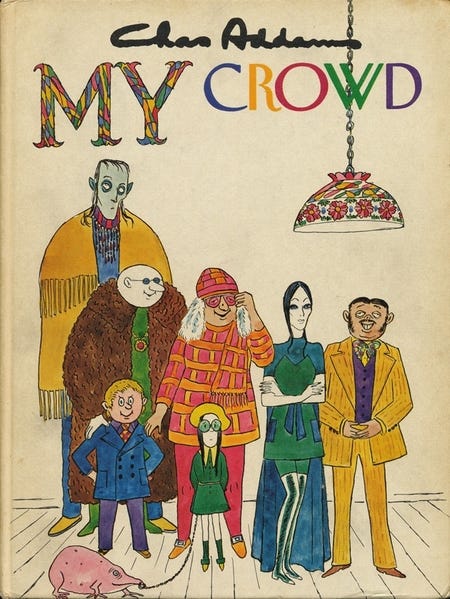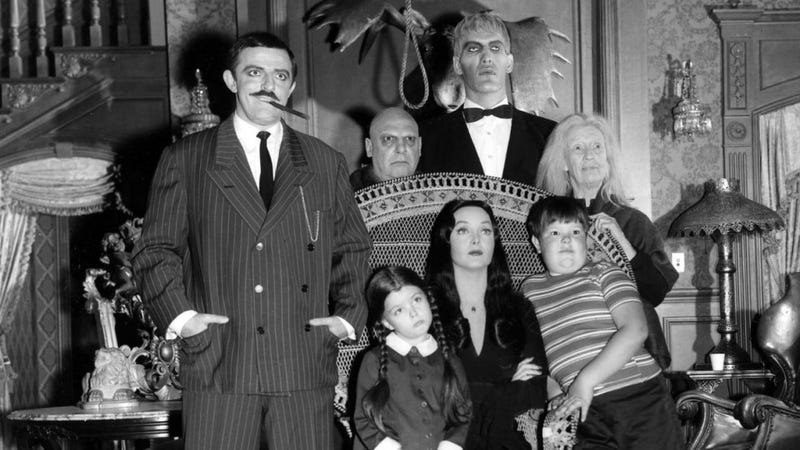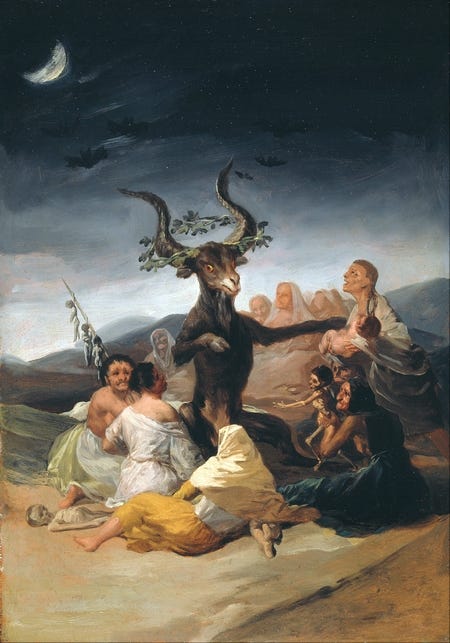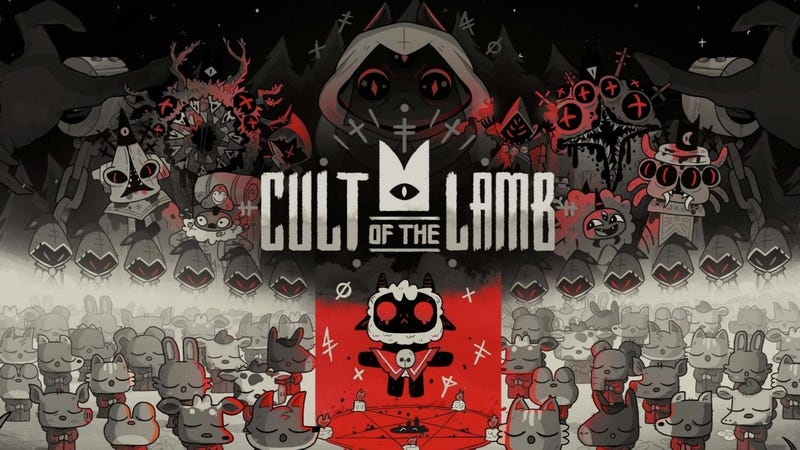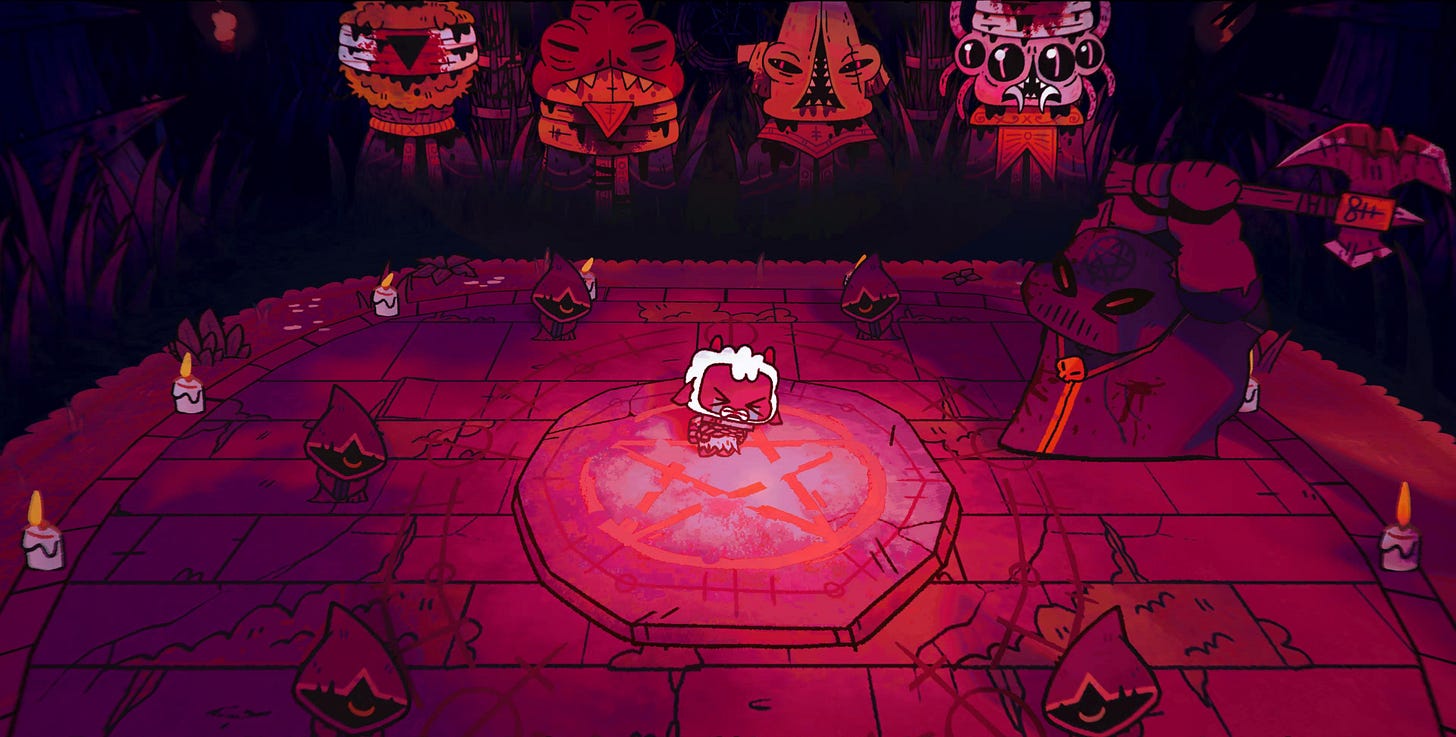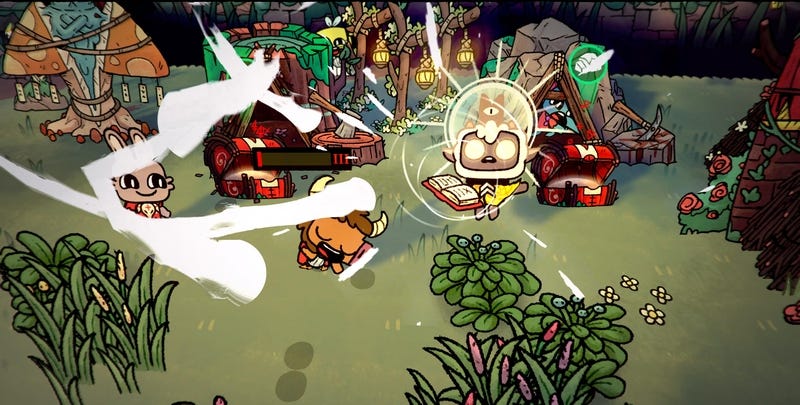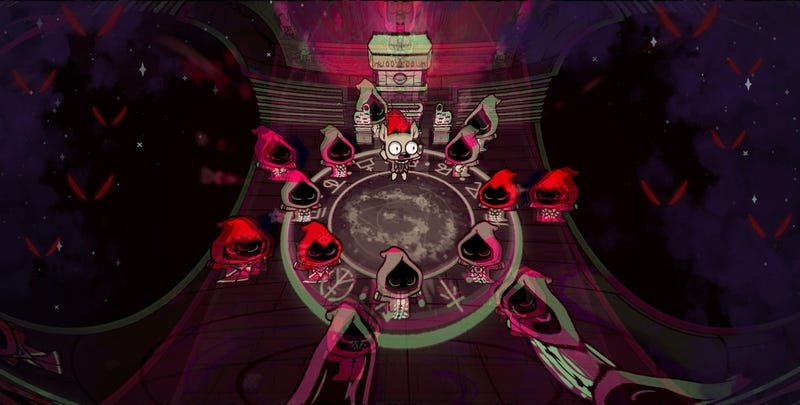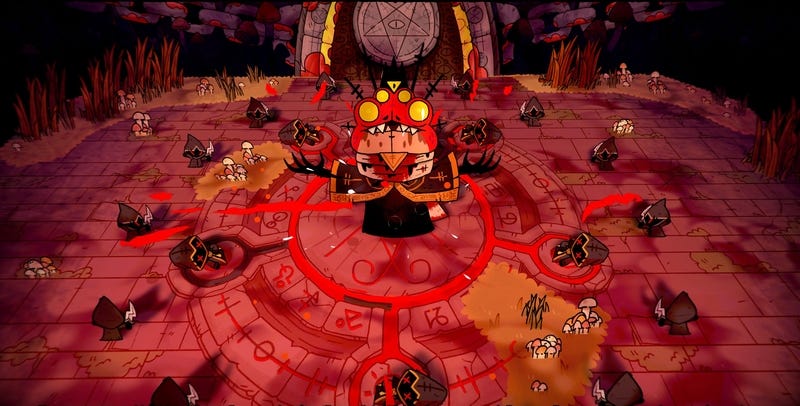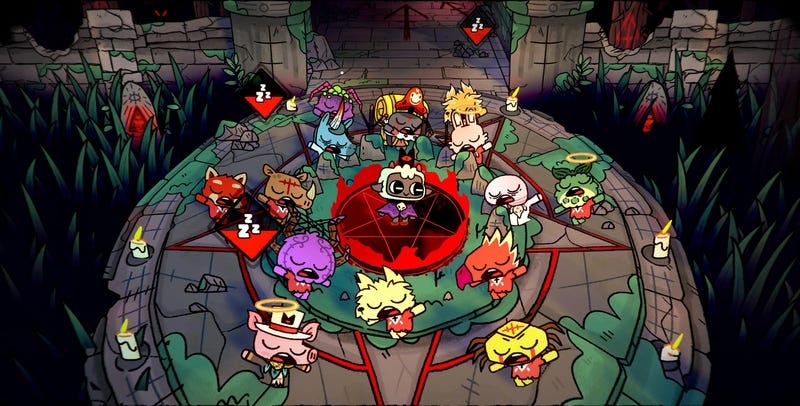The Cuteness of Evil
Charles Addams meets Goya and Cult of the Lamb is born. #painting #graphicart #religion #videogame
Welcome back to Artcade, the house of horrors that doesn’t scare anyone. This is the kind of haunted house I’d actually walk into; the amusement-park, pay-to-scream kind has never made sense to me. Isn’t life enough? Today we set a little altar, lay fright on top, and once the sacrifice is over even fear turns into a place you can inhabit peacefully. Enjoy the read!
Francisco Goya (1820–1823) Witches' Sabbath (The Great He-Goat) [El aquelarre, Escena sabática o El gran cabrón] [Painting] [Oil on mural transferred to canvas] [140.5 cm x 435.7 cm] Museo del Prado, Madrid
Maybe number one on my list of paintings I’d love to own but would never hang over my bed, Witches’ Sabbath is the pocket edition of everything you’d expect from one of Goya’s Black Paintings: wide, staring eyes, shadowy figures, social critique, and a questionable dress code.
What drives me wild here is Goya’s technique: he started from a completely black ground and then painted the figures on top. The goat is, literally, the background left unpainted. A way of picturing Satan so swollen with metaphor it’s hard to pick just one. If I must: Satan as a void—an empty space that takes shape only thanks to the crowd’s fear and frenzy.
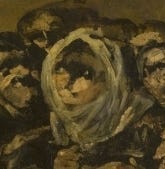
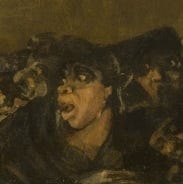
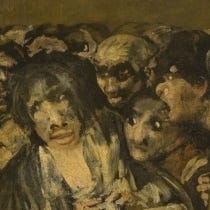
Charles Addams had a very different relationship with the macabre and the wicked. His drawings and strips politely flip our sense of “normal,” and a monstrous, different family becomes the manifesto of true love, affection, and honesty.
The Addams Family cartoons appeared in The New Yorker for the first time in 1938 and kept popping up until the author’s death fifty years later. I’ll leave you with two gorgeous covers among the many Addams books published over the years.
The characters were born on the page, but massive fame arrived with the 1960s TV version: Uncle Fester with a glowing light bulb in his mouth, Lurch’s eloquent silence, and Wednesday’s gloom. Indelible traits, all perfectly performed.
Both Francisco Goya and Charles Addams kept close company with the dark side of life. Goya plunged into it and painted what he’d seen; Addams tried to show that it isn’t the surface that decides value, but what’s intimate and true.
Now imagine these two making something together today. The Witches' Sabbath (original shown below) reimagined in the spirit of Charles Addams. What would come out of it? You can probably see where I’m going.
Francisco Goya (1798) Witches' Sabbath [El aquelarre] [Painting] [Oil on canvas] [43 cm × 30 cm] Museo Lázaro Galdiano, Madrid
With a bit of luck, a goat (better yet, a jackass) can gather a crowd and turn it into a community. They don’t realize they’re actually sacrificial victims, useful only to grow its power. But enough about current politics.
Cult of the Lamb starts from the same premise as Goya’s work. At the center isn’t a goat but a ridiculously cute lamb who, true to tradition, is about to be sacrificed (see screenshot below).
Between raids and village management our lamb has plenty to do: found a cult, preach, and feed the flock. Every now and then, to boost community morale, it turns someone into smoke. Ruthless and gorgeous, like Miley Cyrus singing atop a wrecking ball.
Goya and Addams would’ve gladly played Cult of the Lamb. Sigils, masks, crescent moons, and bone altars mingle with bouncy, big-eyed art and a palette fit for a candy shop. Odd power-up rituals make every villager unique, and the affection you’ll feel for some of them is the only lifeline they’ll have.
In Cult of the Lamb, whether a follower is crowned or tossed into the pit makes little difference; the action lands with the same plush softness. Faced with the game’s charm, adorable and sinister at once, the player can only surrender to the same strange tenderness we felt when Thing was shut into its box and put away.
Massive Monster (2022) Cult of the Lamb [Video game] [Roguelite, Management sim] [14½ hours] (Playstation 5) [MacOS, Windows, Nintendo Switch, Playstation 4, Xbox One/Series X/S] Devolver Digital
Information Desk:
The Black Paintings are a series of fourteen works Goya used to decorate a house he had purchased. Can you imagine living in a home whose walls are covered with paintings like these?
If you think Cult of the Lamb is absurd and a lamb founding a cult sounds implausible, get ready to recalibrate both “absurd” and “plausible” with Wild Wild Country, the Netflix documentary about Osho.
Addams Family video games—do they exist? A few, some of them terrible (see Fester’s Quest on NES). The best is probably Addams Family Values, a Super Nintendo and Mega Drive game that plays a bit like old-school Zelda but with Fester instead of Link. If you’ve never seen it, here’s a video:
My last two coins
When I read the word “lamb,” my brain jumps straight to Thomas Harris’s The Silence of the Lambs. In Italian the title became Il silenzio degli innocenti, which in English basically reads like “The Silence of the Innocents.” The translation loses the reference to the moment when, if I remember right, the protagonist hears the lambs fall silent, goes into the barn, and realizes they’ve been slaughtered. That childhood trauma marks her, etc., etc. Whenever I think about that translation my brain short-circuits, because while it’s true the translation isn’t faithful, that title simply sounds better in Italian. But the meaning gets lost. But it really does sound better. But the reference mattered. But the new title is just so... well, fine, I’ll keep thinking about it until the next episode, ciao!



